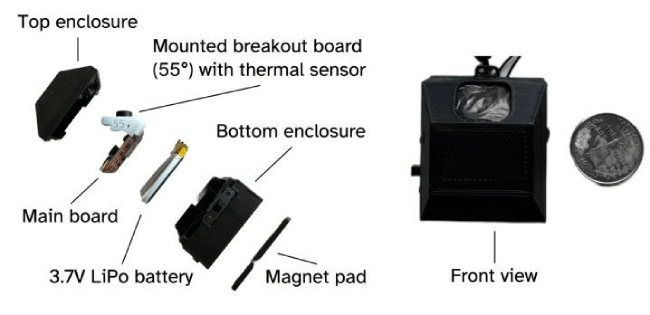New Wearable Sensor Could Help Smokers Quit for Good
Insights | 23-02-2023 | By Robin Mitchell
The smoking of substances such as tobacco presents numerous dangers to one's medical health, including an increased risk of cancer and exposure to carcinogens. Quitting smoking can be difficult, especially for those who are addicted to nicotine or the habit itself. However, a new wearable sensor called SmokeMon has been developed by researchers from Northwestern University to help prevent relapse by tracking the smoker's activity and providing aid. What challenges does smoking present, what did the researchers develop, and could these devices be used for more than just smoking?
What challenges does smoking present?
The smoking of substances (such as tobacco) has been an integral part of cultures all over the world for thousands of years, being used to heighten experiences, pass times of boredom, and even help with concentration. However, the past 50 years of medical science have shown a clear link between smoking and numerous diseases (such as cancer, diabetes, and heart failure). While this wasn’t exactly an issue for early humans, where the average age was between 20 and 25, however, for modern humans, where life expectancies now hit the high 80s, smoking is one sure way to shorten a life.
Despite the clear evidence of the numerous medical dangers of smoking, it is still a widely practised habit. A minority of smokers will do so for social and pleasure reasons, and these smokers can easily stop smoking on command with no consequences. However, the vast majority of frequent smokers are addicted (either to nicotine, the habit, or both), making giving up extremely difficult.
One method to quit smoking is to go “cold turkey”, essentially stopping all smoking, but this can lead to numerous physical and mental health issues. Reducing the number of cigarettes consumed over time can help minimise withdrawal, but even if someone is successful, it is possible to fall back into the habit, especially during a time of stress.
But it is not just smokers who are at risk from disease; anyone in proximity to a smoker will be subjected to second-hand smoke, which can cause complications. While the risk of second-hand smoke is substantially less, it is still significant enough that it can be measured. Thus, helping individuals quit smoking not only improves their health but those they smoke around.
Wearable smoking device to help prevent relapse
Recognising the challenges of smoking, researchers from Northwestern University recently developed a wearable device that can detect if an individual is either planning to smoke or already smoking and, from there, help to provide aid to the smoker.
The device, called SmokeMon, is a portable device powered by internal batteries and includes an array of sensors capable of capturing spatial, temporal, and thermal information from the wearer. Worn around the neck, the device can make numerous determinations, such as the length of a puff, the rate of breathing, the air quality around the individual, and the time of day, so that researchers can create an accurate model of the smoker. From there, the sensor can wirelessly signal a health coach, who can then call the individual to provide encouragement and talk about issues the smoker may be going through.

Northwestern University
The 500mAh battery enables the sensor to operate on a single charge for up to 19 hours, which is more than sufficient for a typical workday. Using a thermal imager over an RGB camera helps provide a high degree of privacy. According to the researchers, other smoking devices have utilised accelerometers and gesture detection, but this can routinely see drinking and eating confused with smoking, but the use of thermal imaging means that only heat activities are detected. The researchers are also looking to develop chest sensors that will help to provide insight into smoking patterns.
“Now we can begin to test the effectiveness of this device in improving the success rate of smoking cessation programs by preventing relapse in smokers who are planning to quit. We want to catch them before they completely fall off the wagon.” - Nabil Alshurafa, Associate Professor of Preventive Medicine (Behavioral Medicine) at Northwestern University Feinberg School of Medicine.
Could these devices be used for more than just smoking?
What the researchers have developed could easily be expanded into other harmful activities. For example, localised alcohol sensors could be used to help individuals trying to cut back on drinking, another activity that has numerous side effects, including long-term health effects. Those addicted to harmful drugs could also utilise the sensor to help withdraw, and the ability for the sensor to automatically contact a sponsor could be essential for getting help to those before they relapse.
In a more unusual application, these sensors could even be fitted with GPS that essentially creates geofences. This would be ideal for those looking to lose weight and avoid fast food chains or those who have difficulty with spending and want to avoid luxury stores. However, the ability for such a device to track and monitor individuals introduces a whole host of privacy concerns, meaning that such devices would have to be solely for medical purposes only.
Overall, what the researchers have demonstrated here shows real promise and could be key to giving specialised care.

